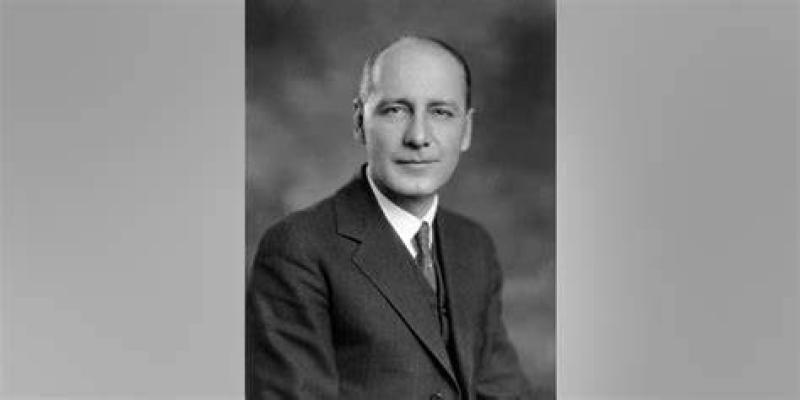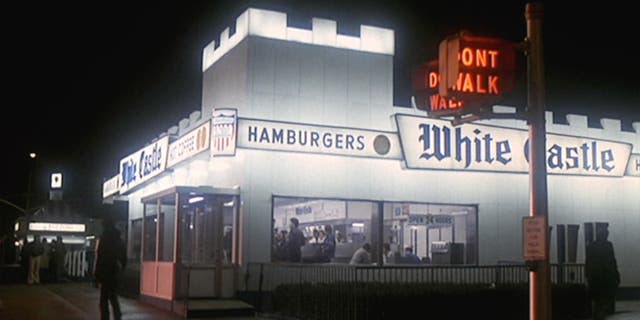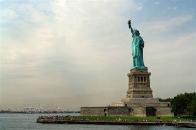Meet the American who made us flip for fast food: White Castle founder Billy Ingram
By: Kerry Byrne (Fox News)



Edgar Waldo "Billy" Ingram, born in Colorado in 1880, opened a White Castle in 1921 — and changed American eating habits forever.
Americans have an insatiable appetite for fast food.
Credit — or blame, as the case may be — entrepreneur Billy Ingram.
The Colorado native founded the world's first burger chain, White Castle, in Wichita, Kansas, in 1921. He is widely considered the father of fast food — recognized as its creator by industry media as early as 1957, before most modern fast-food brands were even born.
The United States today has about 190,000 fast-food eateries, according to restaurant industry sources. But only one was the first.
"White Castle's rise to cult status was nothing short of miraculous," raved burger enthusiast and "Howard Stern Show" radio personality Jon Hein in the debut episode of TV program "Fast Food Mania."
Ingram pioneered many of the processes, equipment and even marketing techniques that make fast food possible today: delicious, savory and mouth-filling flavors served quickly and affordably with the same taste profile offered by many different locations.
His original slider hamburger cost just 5 cents 101 years ago.
A White Castle burger costs about 89 cents today — a delicious steal sold by the sackload.
"It's just really simple, delicious comfort food," competitive-eating champ Joey Chestnut told Fox News Digital this week.
"It's just really simple, delicious comfort food." — Eating champ Joey Chestnut
"The griddled onions, the way the burger and the bun are kind of steamed — you never get a dry White Castle bun. I love them."
Chestnut and fellow competitive eater Matt Stonie recently savaged an order of 100 White Castle sliders in Las Vegas.
Not for a competition. Just for fun.
"It was a long, late night in Vegas," he noted.
Fast-food founder Ingram inspired a cult phenomenon, in addition to an industry.
White Castle created the Cravers Hall of Fame in 2001 to honor those who have displayed "a lifetime of devotion going to extreme lengths to satisfy cravings," company spokesman Jamie Richardson told Fox News Digital.
Members include rock 'n roll icon Alice Cooper, "Man vs. Food" host Adam Richman and the late titan of the comic-book genre, Stan Lee.
"I am not only in the Rock & Roll Hall of Fame, but I'm also in the White Castle Cravers Hall of Fame," Cooper boasted to Fox News Digital.
"Yep. They made me a throne out of White Castle Burgers. I ate it," he said.
Edgar Waldo "Billy" Ingram was born in humble circumstances in Leadville, Colorado, in 1880.
He worked briefly as a reporter covering the livestock industry for the Omaha (Neb.) Bee around 1900, before moving to Wichita to pursue his career in real estate and insurance.
There, he became active in the Rotary Club and met local businessman and burger-shop owner Walter Anderson.
The innovative fry cook held the key to the future of American food.
"In 1916, Anderson developed a different method of preparing a hamburger sandwich by flattening a ball of ground meat and cooking it with onions on a hot griddle for a short period of time," writes the Kansas Business Hall of fame.
"White Castle's rise to cult status was nothing short of miraculous." — Fast-food expert Jon Hein
"Prior to Anderson's method of preparation, the hamburger sandwich consisted of a thick ball of ground meat cooked slowly on a griddle for an indefinite period of time," noted the same source.
"His hamburger sandwich proved popular enough for Anderson to open three hamburger stands in Wichita between 1916 and 1920."
Ingram loved the concept.
He invested $700, they formed White Castle — and they opened their first eatery together in 1921 on Main Street in Wichita. It's known in company lore as White Castle No. 4 — the first shop the partners opened together.
The tiny burgers, about 2 inches square, are still sizzled in onions today, the top bun steaming on top of the patty — largely unchanged from the way Anderson cooked them years before.
Birth of fast-food phenomenon
People in Wichita loved the burgers. But the meat industry nationwide had fallen on hard times as Ingram and Anderson looked to grow White Castle.
Journalist Upton Sinclair had published "The Jungle," his scathing novel of the meatpacking industry, in 1906.
Title page for Upton Sinclair's "The Jungle," 1906. The book caused a sensation with its depiction of conditions in the meatpacking industry. (Getty Images)
"They use everything about the hog except the squeal," Sinclair famously wrote, while exposing the wretched conditions in which humans worked and animals were slaughtered in turn-of-the-century America.
Ingram was forced to not only mass-market his new concept, but to do so against the cultural headwinds of the time.
"Hamburger was not a food that self-respecting moms would feed their family," said Richardson. "It was seen as unsanitary. He completely righted the ship with quality standards, cleanliness and all of it out in the open."
He conceived of the brand White Castle to project a glistening, wholesome image.
"The 'White' [was] to connote cleanliness," said brand spokesman Richardson. "'Castle' to indicate permanence and stability."
"Every inch of the grill was dedicated for either the bread or the beef in small, square patties."
Ingram then went to work perfecting ways to turn out Anderson's burgers as quickly as possible — in a sparking, sanitary space to reassure a wary public.
"There was a real assembly-line fervor that was raging across America [in the 1920s]," author and fast-food expert Adam Chandler told Smithsonian Magazine in a 2019 interview.
"White Castle adopted this model — they had food that was prepared quickly in a very highly mechanized, highly systematized way. Every inch of the grill was dedicated for either the bread or the beef in small, square patties."
He added, "[White Castle] had these efficiencies built into it that really spoke to the fascinations of the era. Now it would sound weird — the idea that your experience there should be the same every single time and that every customer gets the exact same food over and over again."
Ingram bought out Anderson in 1933 and expanded to Detroit, Chicago, Cincinnati, New York and Minneapolis. In 1934 he moved the company headquarters to Columbus, Ohio.
Fast-food fever soon gripped the nation.
Kentucky Fried Chicken (now KFC) opened in 1930; Dairy Queen in 1940; and Jack in the Box in 1951, among others.
The first McDonald's hamburger shop opened in 1940.
By the time Ray Krok turned it — in 1955 — into the fast food chain we know today, White Castle was well on its way to selling burger No. 1 billion.
It passed that milestone in 1961.
'Billy changed the way the world eats'
Billy Ingram died in Columbus on May 20, 1966, after battling a short illness. He was 85 years old.
"He came into the office almost every day to the very end," said Richardson.
White Castle founder Billy Ingram at the grill. He "parlayed a 5-cent hamburger into a $36 million chain." (Courtesy White Castle)
"Mr. Ingram helped found in 1921 the White Castle System, noted for its inexpensive burgers, years before [the] recent boom in hamburger chain operations," The New York Times reported in its obituary.
It called Ingram "the man who parlayed a 5-cent hamburger into a $36 million chain."
White Castle did $847 million in sales in 2021.
"I chill at White Castle 'cause it's the best." — The Beastie Boys
The brand remains small by modern fast-food standards: It has fewer than 400 locations, most of them clustered in the Midwest and New York area.
White Castle supplements its in-store product with a vast fast-food business. Its sliders are available in the frozen-food aisle of supermarkets in all 50 states.
White Castle has also managed to punch above to build a legacy among its many loyal fans in pop culture.
White Castle enjoyed a trophy silver screen moment in the landmark 1977 film "Saturday Night Fever" when Brooklyn disco celebrity Tony Manero (John Travolta) takes his date to the burger joint — with his classless buddies.
Millions of American teenagers who had never heard of the regional brand were turned onto the magic of White Castle by the Beastie Boys in their celebrated 1986 debut album "Licensed to Ill."
Americans are expected to spend about $333 billion on fast food in 2022.
The New York City rappers shouted out the burger joint in five of the 13 tracks on the album; and again in a tune on their sophomore album "Paul's Boutique."

The movie "Saturday Night Fever" (1977) featured a scene filmed in a White Castle restaurant, bringing nationwide recognition to the regional brand. (Photo by CBS via Getty Images)
"I chill at White Castle 'cause it's the best," the trio rapped in "The New Style."
The Smithereens recorded the song "White Castle Blues" in 1986, a novelty in their breakout year.
The burger eatery was the subject of the 2004 Hollywood comedy, "Harold & Kumar Go to White Castle."
The United States today is a fast food nation. Americans are expected to spend about $333 billion on fast food in 2022, according to IBIS World data.
"Billy changed the way world eats by making hot, tasty food affordable for the masses," said Richardson, company spokesperson.




